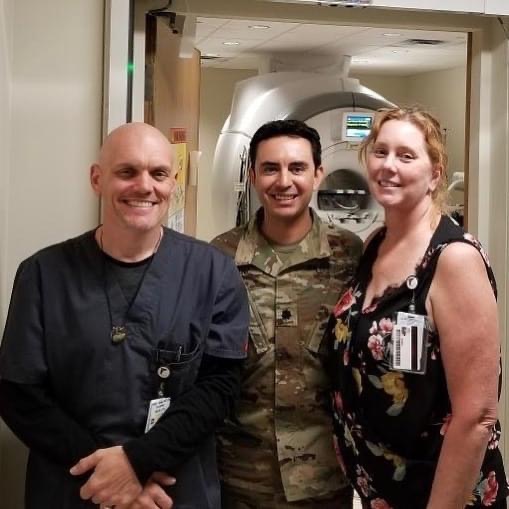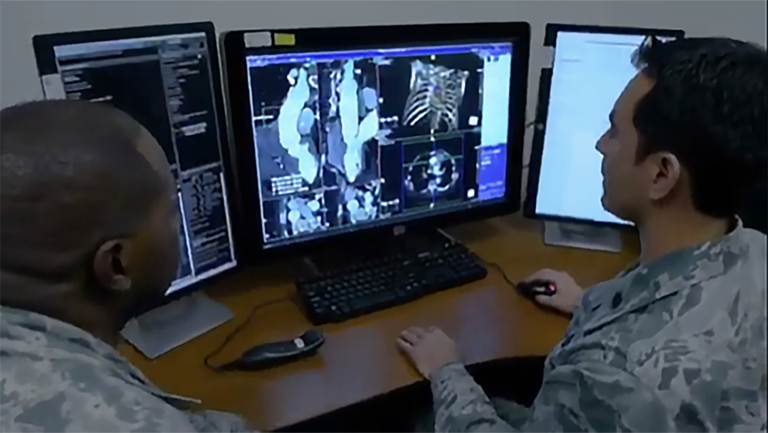The capabilities of cardiac MRI extend far beyond other imaging modalities, making it an exceptional tool for answering important clinical questions that would otherwise be difficult to evaluate.
However, its complexity, long imaging exam protocols, and long post-processing times have presented a barrier to wider adoption. Dr. Giovanni Lorenz, a Cleveland Clinic fellowship-trained Cardiac and Thoracic radiologist, is at the forefront of eliminating these limitations.
Associate Professor for SAUSHEC, USUHS, and UIW medical school and residency programs, and part-time researcher for several large scale projects for DHA, USAF, Dr. Lorenz has reshaped the way cardiac MRI is performed, cutting exam times down to 30 minutes. In this interview, we sat down with him to discuss how cardiac MRI is evolving, how he’s implemented more efficient workflow processes, and what we can expect to see in the future for cardiac MRI.
[DocPanel] What inspired you to get into the field of radiology?
[Dr. Lorenz]
I am inspired by this different way of looking at medicine within imaging (pun intended). Instead of a pyramid-shaped role of responsibility that moves upward to the physician and surgeon – the field of imaging medicine is team-based and circular. Every player – the patient, the technologist, the IT, and the radiologist – are equally important and must work together to pass the exam “baton” and make the diagnosis. If you think about it, the most winning solutions have always been team approaches; it’s no wonder why radiology is able to diagnose and “see” hundreds of patients a day.
[DocPanel] When did you first start working specifically with cardiac MRI?
[Dr. Lorenz]
I focused on cardiothoracic imaging during my residency & fellowship, having an amazing opportunity to work with cardiac and thoracic imaging experts at the Cleveland Clinic. As a newly minted staff within the largest military health facility in the US, I was directed to double the size of our cardiac MRI program, focusing on increasing the patient volume, improving their exam experience, and designing protocols that met our unique military population.

[DocPanel] You’ve made tremendous strides in creating efficient workflow processes for cardiac MRI – can you speak a bit about this?
[Dr. Lorenz]
“The greatest gift we have is the one we can share.” And with this mantra in mind, I knew that our collection of 8 magnets and 30 MRI technicians needed to be shared with more patients.
I reduced our exhaustive 1-2hr cardiac exam times. I needed to cut my exams to help our musculoskeletal, neuro, and abdominal patients get into the magnet. I’m proud to say that we now routinely offer 30 min outpatient and 45min inpatient exam times from 60 min and 1.5hr slots. The secret sauce is essentially one ingredient – letting go of redundant sequences.
If you would like to learn more about how you can access Dr. Lorenz’s expertise on a case-by-case basis through DocPanel, send us a note here.
[DocPanel] What projects are you currently working on that you’re most excited about?
[Dr. Lorenz]
We’re using cardiac MRI to answer questions related to circadian misalignment (i.e. working when it’s dark) and the effect it has on myocardial tissue. This will answer very big questions about how much is too much for the pilot, or the marine, as well as for all of us who work night shifts. We’ve got collaborative projects with Texas Heart Institute in answering Sudden Cardiac Death in the basic military trainee. I’ve got a pet project on evaluating meat versus plant proteins and their inflammatory effects on the heart using cardiac MRI. I’ve also asked for a large fund proposal to evaluate the use of Directed Energy weapons on cardiac tissue.
Probably the biggest one that keeps me up at night is the project about equality and access. How do I deliver center-of-excellence medicine to our military families that are far removed from our large facilities? They deserve the best too, and I think we owe it to them to figure out a solution. I guess that’s what attracted me to DocPanel.

[DocPanel] Where do you see the future of cardiac MRI heading?
[Dr. Lorenz]
Cardiac MRI is ready for its time in the sun as we move it from highly specialized inpatient tertiary hospitals – to ubiquity in the outpatient imaging center.
With 30 minute protocols, beautiful resolution of the heart and chest, and a host of “gold standards” for use, cardiac MRI is ready to be the value-based prime time contender in outpatient medicine. Now is the right time for a practice to consider a cardiac MRI program.
If you would like to learn more about how you can access Dr. Lorenz’s expertise on a case-by-case basis through DocPanel, send us a note here.
The DoD, Air Force, and DHA do not endorse any activities or claims in this post.
